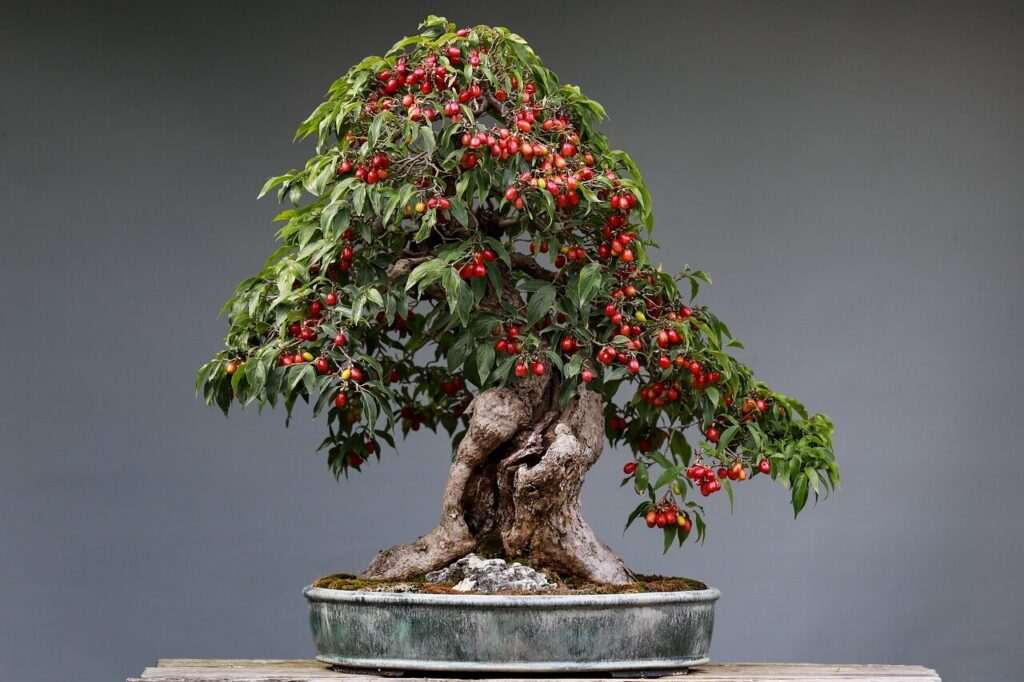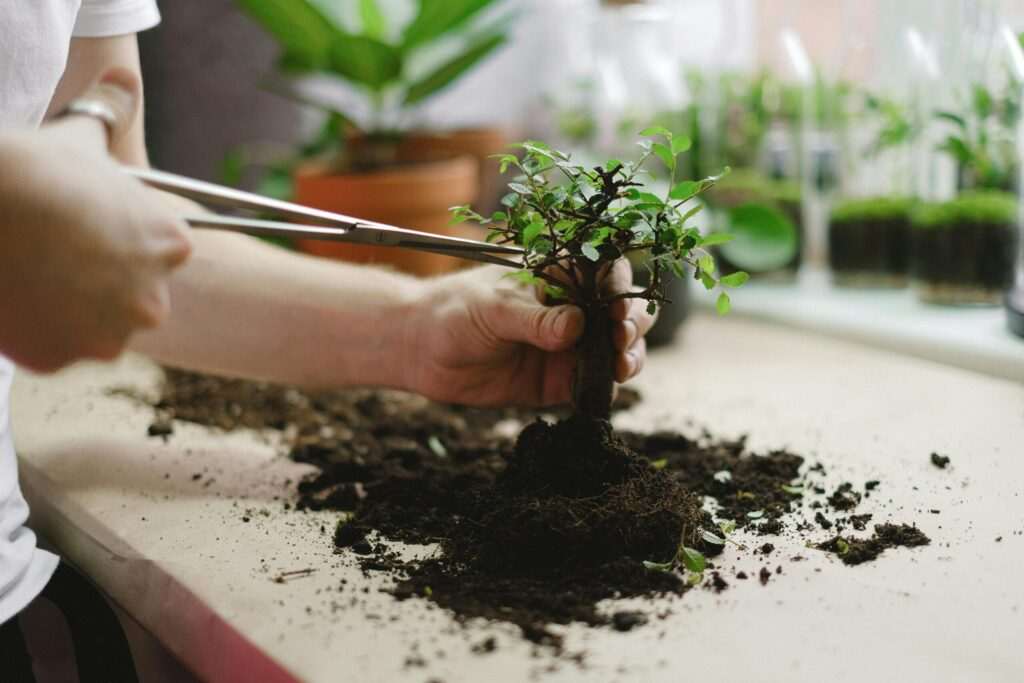How to Care for an Indoor Bonsai: Master Mori’s Guide to Thriving Bonsai Inside Your Home
Ah… the indoor bonsai. A humble tree, small in stature yet vast in presence. Though it lives within walls, it still hears the call of the forest. If you wish to keep it thriving under your roof, you must learn to care for it not as a decoration, but as a living companion.
To care for an indoor bonsai, place it near a bright window with indirect sunlight, water it when the topsoil feels slightly dry, and maintain consistent humidity by misting regularly. Choose an indoor-friendly species like Ficus or Jade, avoid drafts and heating vents, and prune lightly to maintain its shape.
Tend it well, and your bonsai will not only survive — it will bring stillness to the room and teach you the rhythm of patient care. Now, let us walk the path of indoor bonsai together.
Quick Care Overview (How to care for an indoor bonsai Cheat Sheet)
| Care Element | Indoor Needs |
|---|---|
| Light | Bright, indirect sunlight or grow light |
| Humidity | 50%+ recommended; use humidity trays |
| Watering | When topsoil feels dry |
| Soil | Free-draining bonsai soil mix |
| Fertilizer | Balanced bonsai fertilizer every 4-6 weeks |
| Pruning | Light pruning year-round |
| Placement | Near window; rotate for even light |
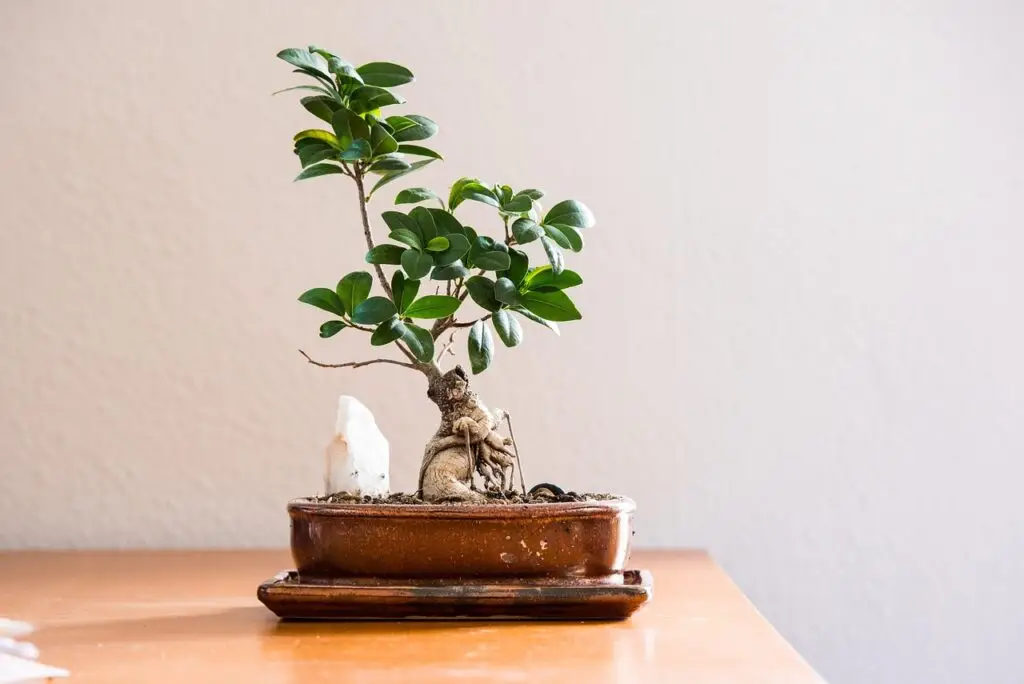
When learning how to care for an indoor bonsai, choosing the right species is a crucial first step. Master Mori believes that some trees are natural monks—calm, patient, and well-suited for indoor life. Here are some species perfect for your indoor dojo:
Ficus Bonsai – Hardy, forgiving, and great for beginners.
Serissa (Tree of a Thousand Stars) – Master Mori’s favorite; delicate but beautiful.
Jade Bonsai (Portulacaria afra) – A succulent bonsai; loves bright light.
Chinese Elm Bonsai – Adapts well to varying indoor conditions.
Schefflera Bonsai (Umbrella Tree) – Grows fast with minimal fuss.
Each species has its quirks, but all can thrive indoors with the right care. Knowing how to care for indoor bonsai means understanding your tree’s specific needs and environment.
Read our full guide to the Best Indoor Bonsai Species >>
How to Care for an Indoor Bonsai Tree in Low Light: Seek the Light, Young Tree
Most indoor bonsai fail because they don’t get enough light. When learning how to care for indoor bonsai, remember this vital truth: your tree was born under the sun!
Natural Light Tips:
Place your bonsai near a south-facing window if you’re in the Northern Hemisphere (north-facing in the Southern Hemisphere). Rotate the tree every few days to ensure balanced growth. Avoid cold drafts and direct heater exposure.
Grow Lights: The Indoor Sun
If natural light isn’t enough, a full-spectrum LED grow light will do wonders. Master Mori uses one shaped like a lotus flower—though any efficient model will do.
Recommended Products:
GooingTop LED Grow Light, 6000K Full Spectrum
Spider Farmer SF-1000 (for multiple trees)
Set your light on a timer: 12-14 hours per day is ideal for bonsai.
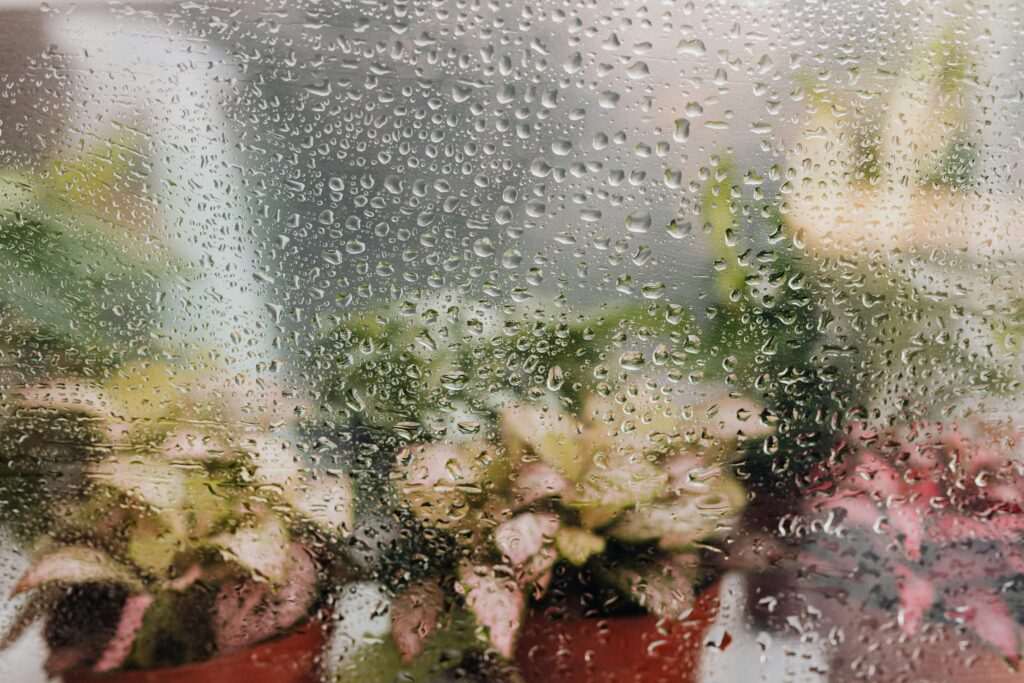
Humidity: The Invisible Rain – Caring for Indoor Bonsai Health
When learning how to care for an indoor bonsai, never underestimate the power of humidity. Indoor air—especially with heaters or air conditioning—is often dry, which can stress your bonsai tree. Indoor bonsai trees need consistent humidity to stay healthy and vibrant. Master Mori once kept his Serissa in the bathroom just to enjoy the soothing steam!
Tips to Boost Humidity for Indoor Bonsai:
Use humidity trays: Fill a shallow tray with pebbles and water, then set the bonsai pot above the water line to increase moisture around the roots.
Mist your bonsai daily, especially in dry climates or during winter heating.
Group multiple bonsai trees together to create a humid microclimate that benefits all your indoor bonsai.
Consider using a room humidifier if you care for several indoor bonsai or other houseplants.
Maintaining proper humidity is essential for indoor bonsai care, helping to prevent leaf drop, improve growth, and keep your tree thriving indoors. For more tips on keeping your bonsai healthy, check out our Bonsai Tree Care for Beginners guide and explore the Serissa Bonsai Care Guide to learn about this humidity-loving species.
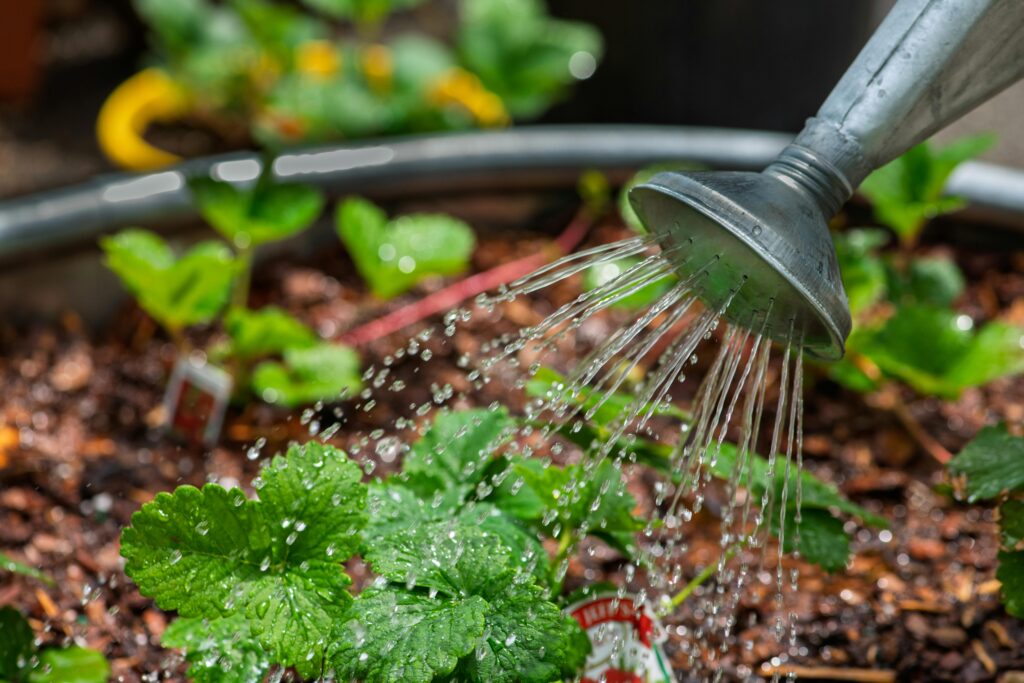
When learning how to care for an indoor bonsai, watering is a delicate art. Indoor bonsai don’t dry out as quickly as their outdoor cousins, but this doesn’t mean you can slack off!
Master Mori advises: stick your finger into the soil—if the top 1-2cm feels dry, it’s time to water. Use a gentle watering can or squeeze bottle to avoid disturbing the roots. Always let water drain thoroughly from the bottom; never let your bonsai’s roots sit in stagnant water, which can cause root rot.
Remember to reduce watering frequency during colder months when growth slows. Overwatering is a slow death; underwatering is a fast one. Find the path between, and your indoor bonsai will flourish.
For more detailed advice, see our Ultimate Beginner’s Bonsai Guide and check out specific care tips in the Ficus Bonsai Care Guide, a popular indoor bonsai species.
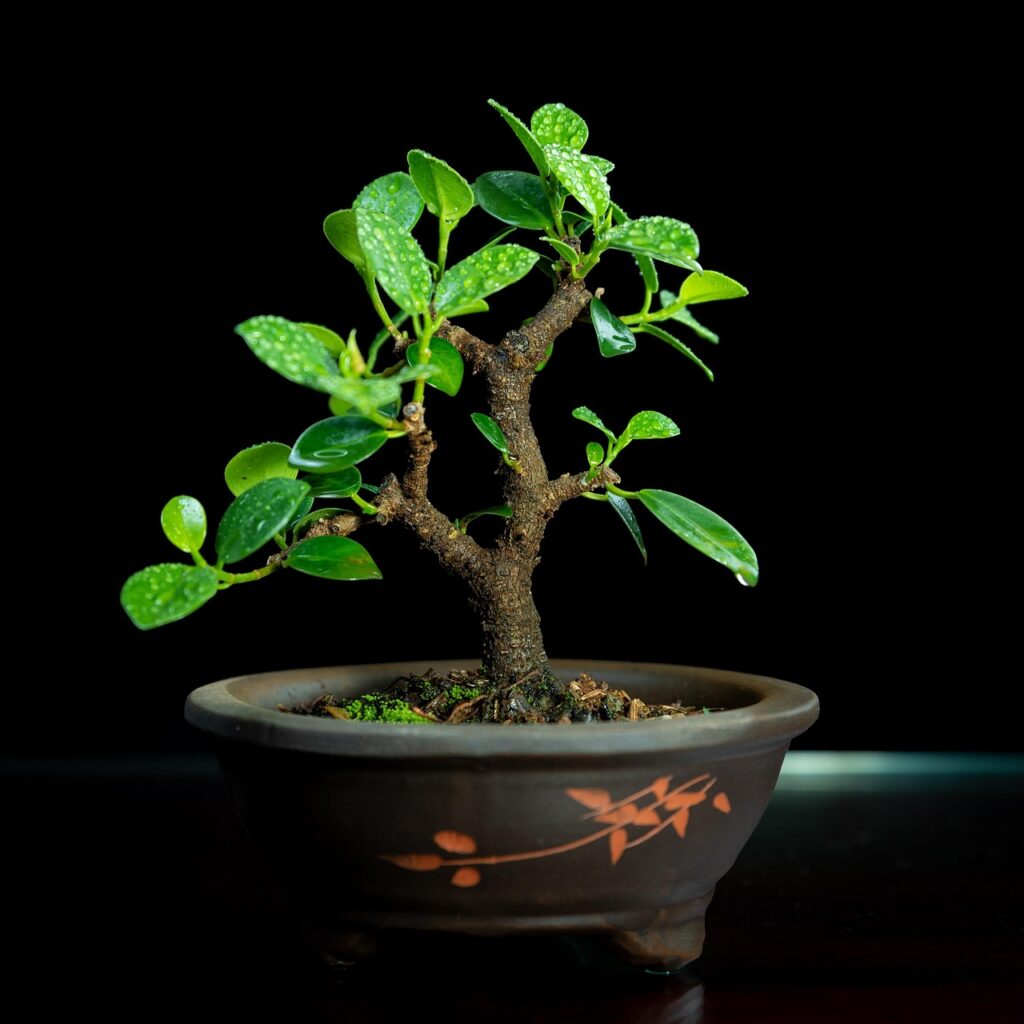
How to Care for Indoor Bonsai: The Right Soil Mix
Not all dirt is created equal. Regular potting soil holds too much water. You need a fast-draining bonsai soil mix.
Recommended Indoor Mix:
1 part akadama
1 part pumice
1 part lava rock or fine orchid bark
You can also buy pre-mixed soil designed for tropical or indoor bonsai.
Common Indoor Bonsai Problems & Fixes
Yellow Leaves – Often due to overwatering or lack of light.
Leggy Growth – Insufficient light; consider a grow light.
Pests (spider mites, aphids) – Spray with neem oil or insecticidal soap.
Root Rot – Poor drainage or too much water. Repot and prune roots.
Leaf Drop – Normal with species like Ficus when moved. Monitor light and water.
If Master Mori had a scroll for every pest he banished… well, he’d need a bigger hut.
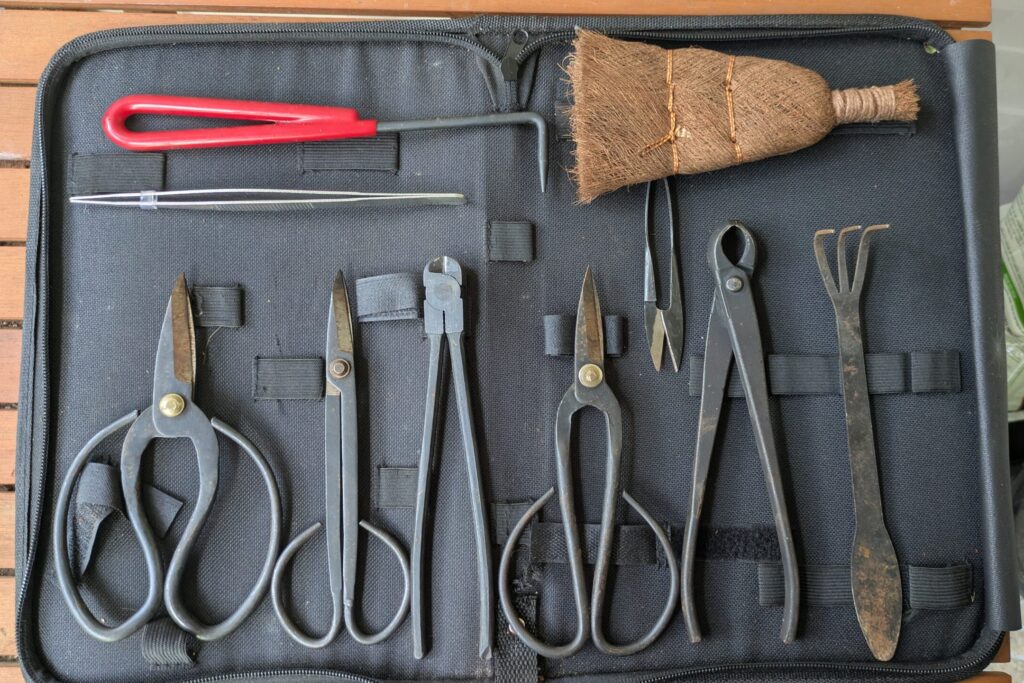
Recommended Tools & Products
If you’re just getting started, these basics will do:
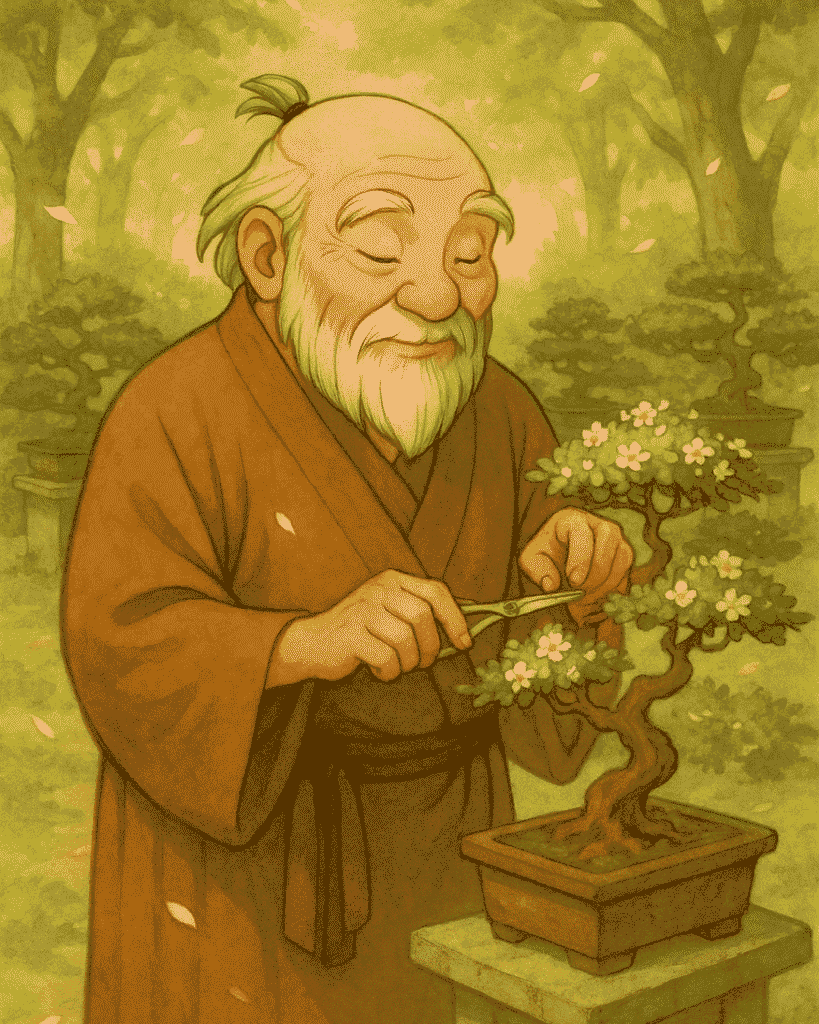
Master Mori’s Final Words of Encouragement
“The tree does not ask why it cannot grow in the garden. It simply grows, where it is, how it can. And so must you.”
Caring for indoor bonsai is both art and meditation. With patience and observation, you’ll learn what your tree needs and respond with grace. Keep a journal. Celebrate small changes. Let your bonsai be your teacher.
Whether you’re working in a high-rise or a humble hut, let nature thrive beside you.
Walk the path of bonsai.
Click Here for our Ultimate Beginners Bonsai Guide (2025)
Other Blogs
How to Care for Indoor Bonsai FAQ
Q: How do you keep a bonsai tree alive indoors?
Treat it less like décor and more like a demanding roommate. Place it near a bright window (they love light), avoid dry air (hello, humidity trays), and don’t let it bake on top of a heater or freeze in front of an A/C. Oh, and talk to it if you like—Master Mori swears by daily tree talk.
Q. How often should you water an indoor bonsai tree?
A. Ah, the ancient mystery! There’s no set schedule—water when the topsoil feels slightly dry, not when your calendar says so. In summer, that might mean daily. In winter, maybe every 3–5 days. Stick your finger in the soil up to the first knuckle. If it’s dry, it’s time for a drink. If it’s wet, let it be. Overwatering is the silent bonsai killer.
Q: Can any bonsai be grown indoors?
No. Only tropical and subtropical species like Ficus, Serissa, and Jade thrive indoors.
Q: How often should I repot my indoor bonsai?
A: Every 2–3 years, depending on growth and root health.
Q: Why is my bonsai dropping leaves after moving it indoors?
A: Trees like Ficus often drop leaves when adjusting to a new environment. Give it time and steady care.
Q: Can I keep bonsai in my office with fluorescent lighting?
A: Only if you supplement with a full-spectrum grow light.
Q: Should I fertilize in winter?
A: Reduce or pause fertilizing during dormancy or slow growth periods.
Explore More Bonsai Wisdom — All Articles
Take the next step on your bonsai journey. Below you’ll find every article we’ve published, thoughtfully grouped for easy discovery.

